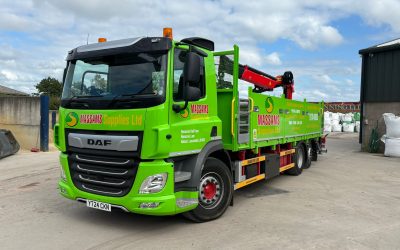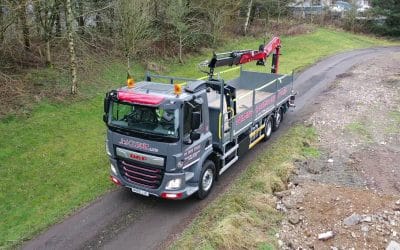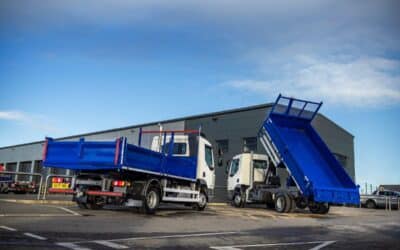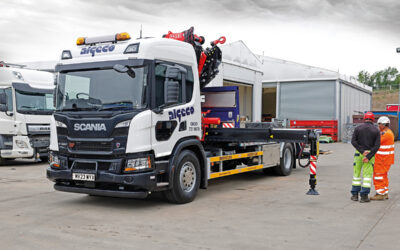As we are hearing across all media outlets, the cost of living is increasing dramatically. Energy and fuel costs are one of the areas that are being hit the most. This is having dramatic effects on businesses as they see costs increase and customers become more careful with their money. As a result, maximising fuel efficiency in commercial trucks has become an important goal for many trucking companies. Here are a few tips and tricks from Mac’s Trucks for achieving better fuel economy:
Maintain Proper Tyre Pressure
Research has found that properly inflated tyres can improve fuel efficiency between 3% and 10%. A tyre pressure gauge is a simple tool that can be used to check the pressure of each tyre. The recommended tyre pressure for a specific truck can usually be found on a sticker inside the driver’s door or in the owner’s manual. There are various ways in which you could maintain proper tyre pressure such as monitoring for signs of wear. It is also important to check the tyre pressure when they are cold, ideally before the truck has been driven or at least 3 hours after. It is recommended to check tyre pressure at least once a month, or before a long trip. Tyres can lose pressure over time, so regular checks are important.
Optimise Vehicle Weight
Loading trucks to their maximum weight capacity can decrease fuel efficiency by up to 20%. There are many ways in which an HGV truck can be loaded to make it more efficient:
- Properly load the truck: When loading the truck, ensure that the weight is distributed evenly across the vehicle. This will help to prevent uneven wear on the tyres and ensure that the vehicle is stable on the road.
- Avoid overloading: It is important to stick to the vehicle’s maximum weight capacity and avoid exceeding it.
- Utilise space efficiently: Make sure to use all available space in the truck in an efficient manner, this will help to reduce the overall weight of the load, which can improve fuel efficiency.
- Use lightweight packaging: When packaging goods, use lightweight materials to reduce the overall weight of the load.
- Consider the weight of the goods: some goods are heavier than others, like steel pipes or concrete blocks. When planning the load, consider the weight of the goods and try to distribute the weight as evenly as possible across the truck.
Improve Aerodynamics
Aerodynamic devices are devices that are added to the exterior of a vehicle to improve its aerodynamics and reduce drag. The main goal of these devices is to minimise the resistance that the vehicle encounters when moving through the air, thus reducing fuel consumption. Adding fairings, side skirts, and boat tails to the back of a truck can improve fuel efficiency by reducing drag.
Schedule Regular Maintenance
Regular maintenance of a truck is important for fuel efficiency because it helps ensure that all of the vehicle’s systems are working properly. This includes things like keeping the air filter clean, which can improve the engine’s ability to breathe and therefore run more efficiently. Additionally, regular maintenance can help prevent issues like low tyre pressure, which can increase fuel consumption. Properly lubricating and replacing worn parts can also improve engine efficiency, which in turn can lead to better fuel economy.
When you buy or rent a truck from Mac’s Trucks’ vehicles are covered by the manufacturer’s warranty. This is generally two to three years depending on the brand. Any trucks that have a body that has been built by Mac’s Trucks are covered for one year. Stay on top of your PMIs and spot potential vehicle inefficiencies early. Saving costly bills for service and MOTs as well as ensuring your vehicle is running at its absolute best. Ensuring your truck is regularly maintained ensured any issues are picked up to improve fuel efficiency.
Use Cruise Control
Cruise control is a feature that allows a vehicle to maintain a consistent speed without the need for the driver to press the accelerator. By maintaining a consistent speed, you reduce the amount of time that the engine needs to accelerate and decelerate. It’s important to note that cruise control should only be used on the highway or in situations where the speed limit is consistent and not frequently changing. Additionally, it’s not recommended to use cruise control on steep hills or in heavy traffic, as it may not be as efficient in those scenarios.
Choose The Correct Gear
Choosing the right gear when driving can help to improve fuel efficiency in a few different ways:
- Engine RPM: The engine’s RPM (revolutions per minute) is directly related to the gear that the vehicle is in. When the engine is running at a lower RPM, it is more efficient and consumes less fuel. When the engine is running at a higher RPM, it is less efficient and consumes more fuel. By choosing the right gear, the driver can ensure that the engine is running at an optimal RPM and consuming less fuel.
- Engine load: Choosing the right gear can also help to reduce the load on the engine. When the engine is under a heavy load, it consumes more fuel. By choosing the right gear, the driver can reduce the load on the engine and improve fuel efficiency.
- Gear ratios: The gear ratio is the relationship between the number of rotations of the engine and the number of rotations of the wheels. Lower gears have a higher ratio and provide more torque to the wheels. Higher gears have a lower ratio and provide less torque to the wheels. By choosing the right gear, the driver can ensure that the engine is operating at its most efficient gear ratio, which can improve fuel efficiency.
- Speed: Different gears are designed to be used at different speeds. Lower gears are more suitable for lower speeds, while higher gears are more suitable for higher speeds. By choosing the right gear for the speed at which the vehicle is traveling, the driver can help to ensure that the engine is operating at its most efficient gear ratio and consuming less fuel.
- Avoiding lugging: Lugging is when the engine is under a heavy load but is still running at low RPMs. This can be caused by driving in too high a gear, or by driving too slow in too low a gear. Lugging can cause the engine to consume more fuel, so it’s important to avoid it by choosing the right gear.
Plan Your Route
Planning your route can improve fuel efficiency in trucks by reducing the amount of time spent idling, as well as by avoiding unnecessary stops and detours. By choosing the most direct and efficient route, you can minimise the distance that the truck needs to travel and reduce the amount of fuel that is consumed. Additionally, by avoiding areas with heavy traffic or congestion, you can reduce the amount of time that the truck spends idling, which can be a significant source of fuel consumption. Using a GPS or navigation system that considers real-time traffic information can help you to plan your route more efficiently and avoid any unexpected delays or detours that may arise.
Mac’s Trucks offer most of the industry’s best navigation systems to help find your drivers the safest and most efficient routes from A to B. As well as circumnavigating low bridges, load limiting roads and narrow streets all while finding the fastest route to your desired destination.
Overall maximising fuel efficiency in commercial trucks is an ongoing effort that requires attention to detail and a commitment to regular maintenance and driver training. By implementing these tips and tricks, trucking companies can reduce fuel consumption and increase profitability.










